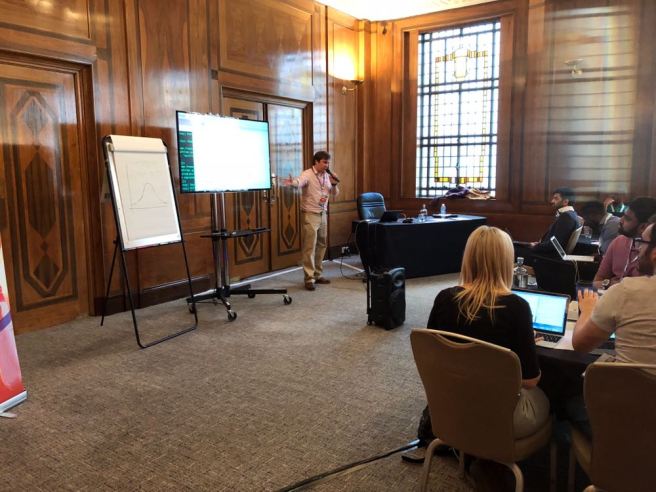This weekend I attended the alternative careers for doctors conference organized and hosted by medic footprints in Covent Garden. My main talks were based on getting doctors to grips with the basics of coding, the anatomy of a website, and a small insight into machine learning. It had to be small because there is only so much you can fit into a day and I find it’s always best to walk away with the basics of coding in order to continue practicing, as opposed to a high-level understanding of machine learning. What was clear was the doctors are embracing coding. There were already junior doctors and medical students who were undertaking PhDs in machine learning.

It is clear that the community is on the verge of consolidating and increasing its impact. However, this wouldn’t be a very good blog if I didn’t put my concerns into the mix. When it comes to the NHS, there’s a lot of pride. This is understandable, it provides healthcare to all regardless of how poor the person is, however, it’s important that we do not let this pride cloud our judgment. Bubbles happen when people do not question the value of something, and this happens when people get emotional. In order to be smart about our steps forward, we have to be realistic.
I’m going to be straight. Although UK academia invented things like the X-ray, CT and the MRI scanner, there is a difference between academia and executing a service or function. These require a well-oiled system, money, and non-academic expertise. The proof is in the statistics. In 2014, when they were collected, the UK was at the bottom in terms of the number of CT scanners per million inhabitants [link], with only Hungary and Mexico having less. Same with MRI scanners [link] with the UK only beating Mexico, Hungary, and Israel. As a result, getting time on these scanners to fully test and refine industry grade tech is hard, as the scanners are being used around the clock to scan patients. Implementing software, in general, is difficult. In order to reduce the load of a server, some of the processing is loaded into the computer through the browser via a front-end framework coded in Javascript. Good luck implementing that with NHS computers that still run internet explorer and Windows XP. When I was at UCL, they were installing proton therapy beams for general cancer treatment, and they were the first NHS trust to be doing this….. The USA has had these beams for 10 years.
Again no place on earth excels in everything. What London does excel in is Financial tech alongside New York. My life has gone to wading through mud for NHS departments to accept free software, to being paid, having 2-week sprints with a team of developers, and a great, advanced, rapid software development cycle in central London in financial tech. The difference is like night and day. Does this mean that the doctors who are looking to innovate in the NHS should just jump ship? No, I wouldn’t be doing this blog if I thought that. However, it does mean that people have to be realistic with their approach. There are always exceptions and every business model is different, however, I must confess that alarm bells go off when someone starts saying that they are going to implement cutting-edge technology in the NHS. Frankly, the NHS systems cannot support cutting-edge technology. What does get my juices flowing is low tech, high impact solutions. My mind always goes back to when a junior doctor made fun of me writing the date on every cannula I inserted. The relative of the patient then piped up and pointed out that when he was in the hospital they didn’t date his cannula. There was some confusion as to when it was inserted and it stayed in longer than it should of. He got severe sepsis and ended up in ITU. If you’re in the NHS, you are in a system that is strained. It does not implement the most cutting-edge tech, but it is an amazing cooking pot for efficiency measures. The UK doesn’t excel in everything, but it could have the next silicon valley healthcare efficiency software systems that reduce hospital admissions and stays. Whilst the USA and Japan can boast the most advanced VR and surgical robots, they do not have a financial incentive to keep patients out of the hospital. I hope the community mainly chooses to work with its surroundings, passion and prestige do not change reality.

